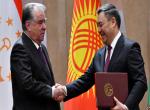A lot has been written of Indian Military’s ongoing modernisation and transformation, both terms used interchangeably. Truth is these terms differ in their purpose and impact, magnitude and scope. Military modernisation refers to acquisitions of modern military wherewithal linked to improving military effectiveness based upon newer concept of operations, tactics, command and control, supporting infrastructure, organisational structure, training and personnel policies. Consequently, this process entails the replacement of existing military technology with significantly more capable technology. Yet, modernization is more than the simple acquisition of modern material and technology, it must be properly linked to appropriate organization, concept of operations, tactics, command and control systems, and supporting infrastructure.
Military transformation, on the other hand, incorporates radical and profound changes in the organizational culture, creating new institutions capable of successfully facing the future challenges of the strategic environment. Military transformation must hence be based upon envisioned future warfare, that would demand newer force structure, modernization, operational readiness, and sustainability to respond to conflicts at all levels.
Lawrence Freedman had stated in the Future of War, that ‘prediction is difficult and likely to be wrong.’ Very few predictions of transformation of warfare in history have been accurately predicted. The current visions of future wars tend to provide inadequate basis for the Indian Armed Forces to transform. Yet, status quo is not sustainable; armed forces must predict and move headlong in transforming doctrines, structures and equipment. As it is systems confrontation, system destruction and multi-domain precision warfare are recognized by the PLA to be the mode of warfare in the 21st century. With these, the PLA opines that the enemy “loses the will and ability to resist” once its operational system cannot function. System destruction warfare constitutes for PLA's the theory of victory.
There are certainties of the battlespace that must dictate our predictions and transformation. The ‘Sino-Indian Rivalry’ (Sumit Ganguly, Manjeet S Pardesi and William R Thompson, Cambridge Press, 2023) reckons that China outranks India in all indices including military modernisation by a factor of three to five.
The most important facet of warfighting is achieving surprise. It is obvious that when it becomes difficult to achieve surprise, warfighting is that much difficult, and attrition will be much larger. A few of the advancements of PLA need mention. The array of modern sensors that the Northern adversary has and is constantly improving upon, achieving operational surprise will be uphill. To that end, China has been rapidly expanding its satellite fleet in recent years, and some of its latest launches include optical and radar surveillance spacecraft. As of March 2024, China has over 600 satellites in operation, including more than 360 intelligence, surveillance, or reconnaissance (ISR) satellites. These satellites use sunlight, infrared waves and radar pulses. In January 2024, Nikkei Asia reported that China is planning to launch 26,000 satellites into low Earth orbit (LEO) to create a global satellite internet constellation called "China's StarLink."
Achieving Battlefield Transparency is also denoted by highly sensitive passive and active sensor arrays. A seamless systemic comprises active electronically scanned radar, electronic warfare direction finding using spectrometers, acoustic signatures, vibrometers, electro-optical sensors (IR and thermal), and wider intelligence collection including monitoring of cellular phones. Inputs so collected use AI and machine learning to fuse inputs and facilitate a digitised monitoring system.
Closest example that comes across is of China’s cutting-edge electronic warfare (EW) capabilities was shown by a recent encounter between US and Chinese forces in South China Sea. China seems to have improved its EW capabilities by investing in new technologies in an extensive kill web consisting of kinetic and non-kinetic elements and can rapidly detect, decode and suppress enemy signals. In December 2023, there was an EW dual between US EA-18 Growler carrier-based EW aircraft and China’s Type 055 cruiser Nanchang. Apparently, Chinese AI-enhanced radar had advantage over the EA-18G’s jamming capabilities. The US Navy dismissed William Coulter, Commander of US Electronic Attack Squadron 136 (VAQ-136), stationed on the USS Carl Vinson, citing a loss of confidence in his ability to command. The new PLA-ISF is designed to integrate emerging AI, quantum and other technologies into China’s multi-domain operational strategy against potential adversaries. EW is also a key component of China’s Multi-Domain Precision Warfare (MDPW) concept, which leverages AI and big data to identify and exploit weaknesses.
China has created an elaborate structure of missiles, the Dongfeng series, including DF-Z F hyper glide vehicle and cruise missiles with varying ranges and capabilities like CJ 10 and 20! China also has in its repertoire precision-guided munitions that use laser-guided and gravity bombs, high mobility, precise, accurate firepower for the PLA's long-range artillery and several loitering ammunition systems and drones. To all this can be fused in, contest in the electromagnetic spectrum, with its relationship with cyber warfare.
Military transformation, in Indian Armed Forces, hence, must be aimed at creation of the precise capabilities to achieve desired outcomes and effects in all specific domains and dimensions, against well considered adversaries. In fact, technological modernisation must be in the overall ambit of conceptual development and envisioning futuristic employment of force in peace and war. Clear intimation of National Will and delineation of the specific capabilities, is imperative to prevent war, present credible deterrence and ensure a robust response to threats. Four pointers are significant to this end.
First, of foremost importance for Indian Armed Forces is operational readiness. This is the ability to create, maintain and train for balanced warfighting capabilities to achieve strategic objectives laid down in peacetime for border management in peace, and to prosecute war, if it happens. Of these, peace-time management of the two disputed borders, LOC and LAC, are of prime concern. LOC is not a legally recognised international boundary, but serves as the de facto border, which though currently under ceasefire, is even in peacetime considered as ‘hot’ and used for pushing in terrorists by Pakistan Army, to a plan. Fact is that Jammu and Kashmir is an identity issue for Pakistan that is the glue that binds the country. It is the raison d’être for the Pakistan Army to retain its hold on the nation. Pakistan, without crossing established red-lines and exposing itself to the penalties and risks of escalation to conventional war, continually reaps success by utilising proxy terrorists. The situation of sponsoring terror has always the potential of escalating to war.
The state of the India-China border, the LAC four years after the post 2020 incursions, is that it is nearly fixated on who is where is basis. The Chinese have been repeatedly stating the time is for ‘normalised border management,’ clearly ceasing further settlement. PLA has created offensive infrastructure and relocated military formations in proximity to the border, thereby creating an environment of threat. Indian Army, hence, is in total mistrust of PLA’s intentions, is occupying defensively the forward-most tier along the complete watershed, with placement of acclimatised reserves in proximity and creating infrastructure at a feverish pace. These disputed borders are largely in super high altitude and as the cliché goes, eats up troops manifold! Fact herein is that the environment of threat and distrust created in the last four years, has forced a very substantial increase in Indian Army’s deployment along the LAC, challenging the peace-field management of units.
The internal security environment in Jammu and Kashmir, South of Pir Panjal Region, which had largely been peaceful over a long period, has seen a sudden, deliberate escalation. This is obviously orchestrated by Pakistan, with weapons and equipment supplied from surpluses left over by the US Forces in Afghanistan. There are evident attempts to infiltrate terrorist, like in Kupwara and Machil. The terror tactics have been largely to target the security forces, and hit and run, that is not to get embroiled in fire fight with the security forces, thereby conserving their manpower. There is usage of sophisticated communication system, and surveillance mechanism of the security forces/ targets. Apparently, a new plan created in Pakistan is being unveiled. This mandates the security forces to enliven the intelligence, the local defence committees, use technology and establish an operational grid. With the difficult terrain and climatic conditions obtaining South of Pir Panjal, the operations will demand large additional security forces. Indeed, as an aside, there have been constancy of the deployment in the Northeast.
Indeed, Indian Army’s much escalated deployments on LAC, continual holding of the LOC, the acclimatised reserves and the heightened commitments to counter-terror grids, are all manpower intensive commitments, that are way above previous commitments. Manpower considerations in the Army are fully contingent on operational commitments and pressures. It is a prime necessity to dynamically reassess the manpower shortages in the Army units, that have ensued in the last four years and plan measures to offset the shortfall. Pragmatically, there must be constant re-evaluation of forces mandatory on all operational tasks, as over-insurance will be detrimental to much deserved adequate peace tenures of the units, necessary as social requirements, and to refit and retrain. It is possible that very large response to operational commitments was initially necessary, though scale-down consequently gets resisted due to voids of intelligence and in decision-making.
Second, there has been a controlled allocation of defence budget. Internally in the Army, it will be advantageous to shed structural and organisational rigidity, based on inflexible war establishment tables (WE). Since independence infantry units in plains and in mountains have remained with four rifle companies, or number of artillery regiments in a brigade with 25 pounder/ 75/24 Howitzer/ 105 IFG is same with 155mm calibre guns, or 45 tanks in super high altitude is same as in deserts, and so on. With the kind of battlefield transparency and lethality, cumulated with open terrain with limited places for concealment, there is space for some dynamism. Sectoral specialisation also needs to be examined, with Rasthtriya Rifles/ Signals Regiments/ Services units model of postings on Corps roster, like for Survey and Target Acquisition (SATA)units.
Third, in qualitative transformation, when a military organisation undertakes a transformative programme, it is normal to expect that existing capabilities are going to be replaced by superior capabilities. There is an implied suggestion that a necessary condition of this change is much enhanced lethality, precision and accuracy, battlefield transparency and digital backbone network. Essential networks would bind tactical units and formations, sensors and shooters and command and control with requisite data base. This will complete the Battlefield Singularity. Again, there has to be crisp prioritisation in qualitative transformation, totally in conformity to warfighting concepts, and not that warfighting concepts and structures get created as post-mortem of technological intake!
Fourth, the threat of system destruction using missiles, rockets, EW, loitering ammunition and drones and directed energy weapons (in time!) must be planned for. Transformation will entail hard and soft kill systems like missile defence systems, electronic countermeasures, decoys and deception, missile approach warning systems, surface-to-air missiles and anti-aircraft guns. Similarly, cyber countermeasures, counter-loitering munitions, secure communication protocols and cybersecurity, will greatly enhance protection and defeat the threat. Since multi-agencies handle the systems, there has to be a concept and plan for development, and automation in execution, with deliberate reining in of turf wars.
In sum, military transformation is a continuous progression that involves new warfighting concepts against adversaries, new doctrines, processes, capabilities, organizations, technology, and trained personnel. While some vertical may only require reengineering to improve their processes or modernization to close gaps and develop better capabilities, others require transformation to accomplish profound changes, capable of successfully facing the future challenges of the strategic environment.
(The paper is the author’s individual scholastic articulation. The author certifies that the article/paper is original in content, unpublished and it has not been submitted for publication/web upload elsewhere, and that the facts and figures quoted are duly referenced, as needed, and are believed to be correct). (The paper does not necessarily represent the organisational stance... More >>
Image Source: https://bharatshakti.in/wp-content/uploads/2024/06/bsi-bbb-2024-06-10T093858.150.png











Post new comment